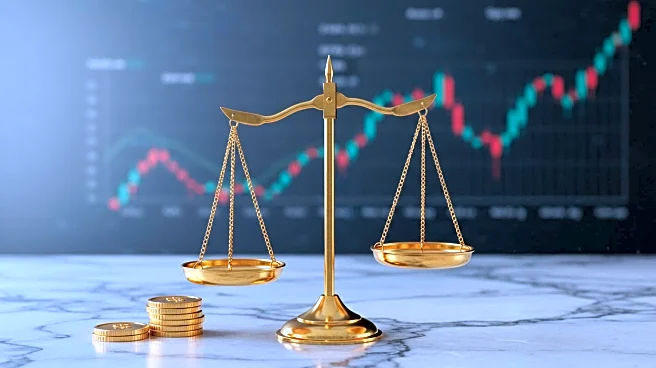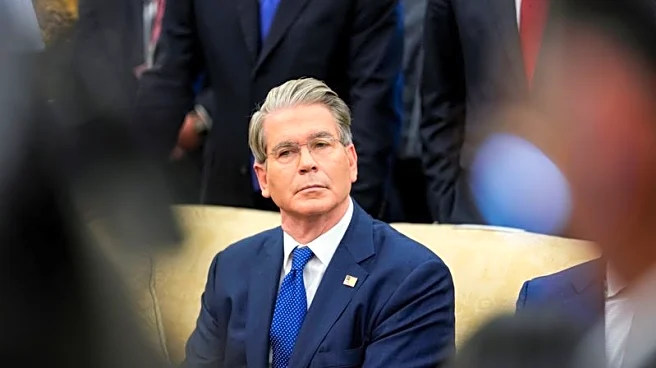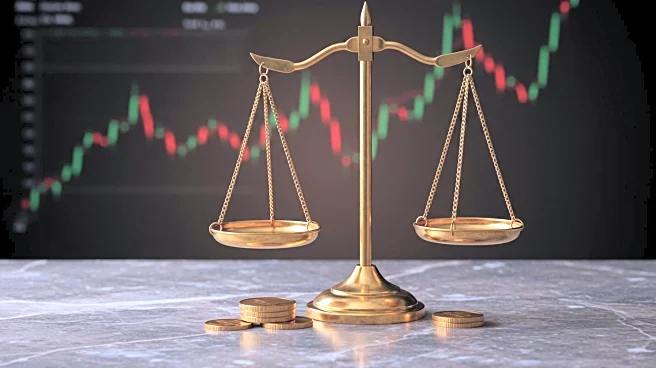What's Happening?
The Federal Reserve is contemplating a potential interest rate cut following a lower-than-expected inflation report and a slowdown in job growth. President Trump has been advocating for lower rates, arguing that it would enhance economic performance and reduce government debt interest payments. Despite Trump's pressure, the Fed has maintained steady rates, but economists predict a shift in policy with a possible quarter-point rate cut in the upcoming meeting. The federal funds rate currently stands between 4.25% and 4.5%, following a significant increase due to pandemic-era inflation concerns. The Fed's dual mandate to control inflation and maximize employment is guiding its decision-making process.
Why It's Important?
The potential rate cut by the Federal Reserve could have significant implications for the U.S. economy. Lower interest rates typically encourage borrowing and spending, which can stimulate economic growth. However, there is a risk of increased inflation if demand rises too quickly. The decision is crucial as it comes amid a slowdown in job growth, with recent reports indicating a sharp decline in employment gains. This move could help prevent a rise in unemployment, but it also poses challenges in balancing inflation expectations. Stakeholders such as businesses, investors, and policymakers are closely monitoring the Fed's actions, as they could impact financial markets and economic stability.
What's Next?
The Federal Reserve is expected to make a decision on interest rates in its upcoming meeting. Economists are divided on whether President Trump's pressure will influence the Fed's decision, but the central bank is likely to base its actions on economic data rather than political factors. The Fed Chair Jerome Powell has emphasized the importance of political independence in policy decisions. The outcome of the meeting will be closely watched by investors and economic analysts, as it could set the tone for future monetary policy and economic direction.












